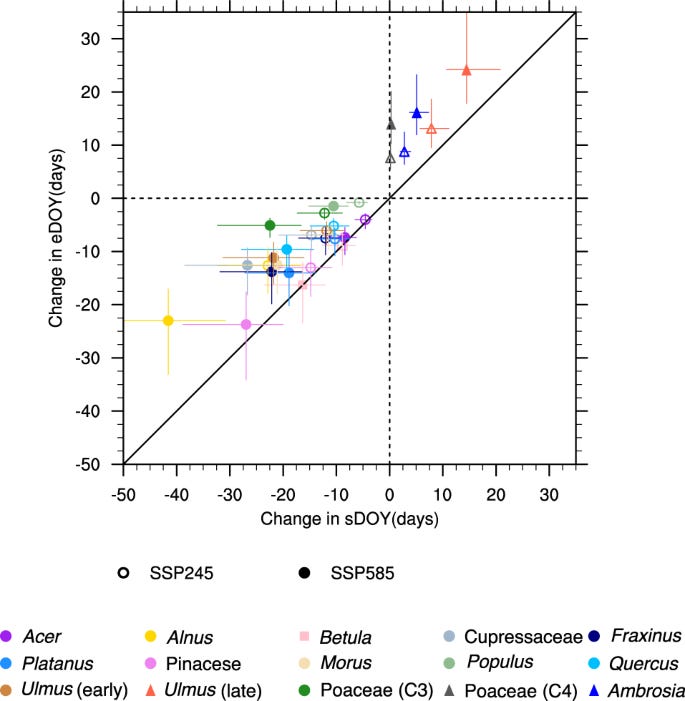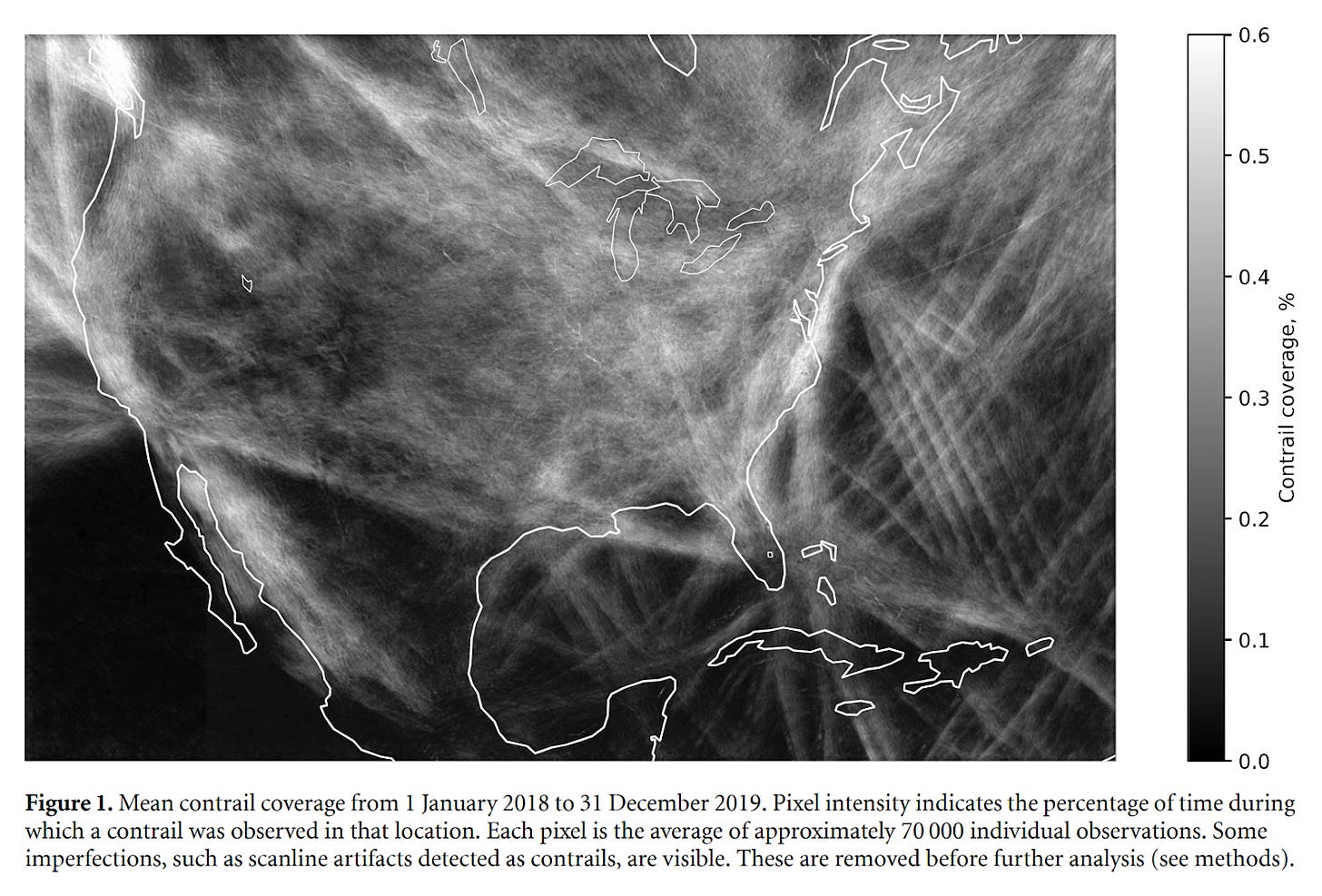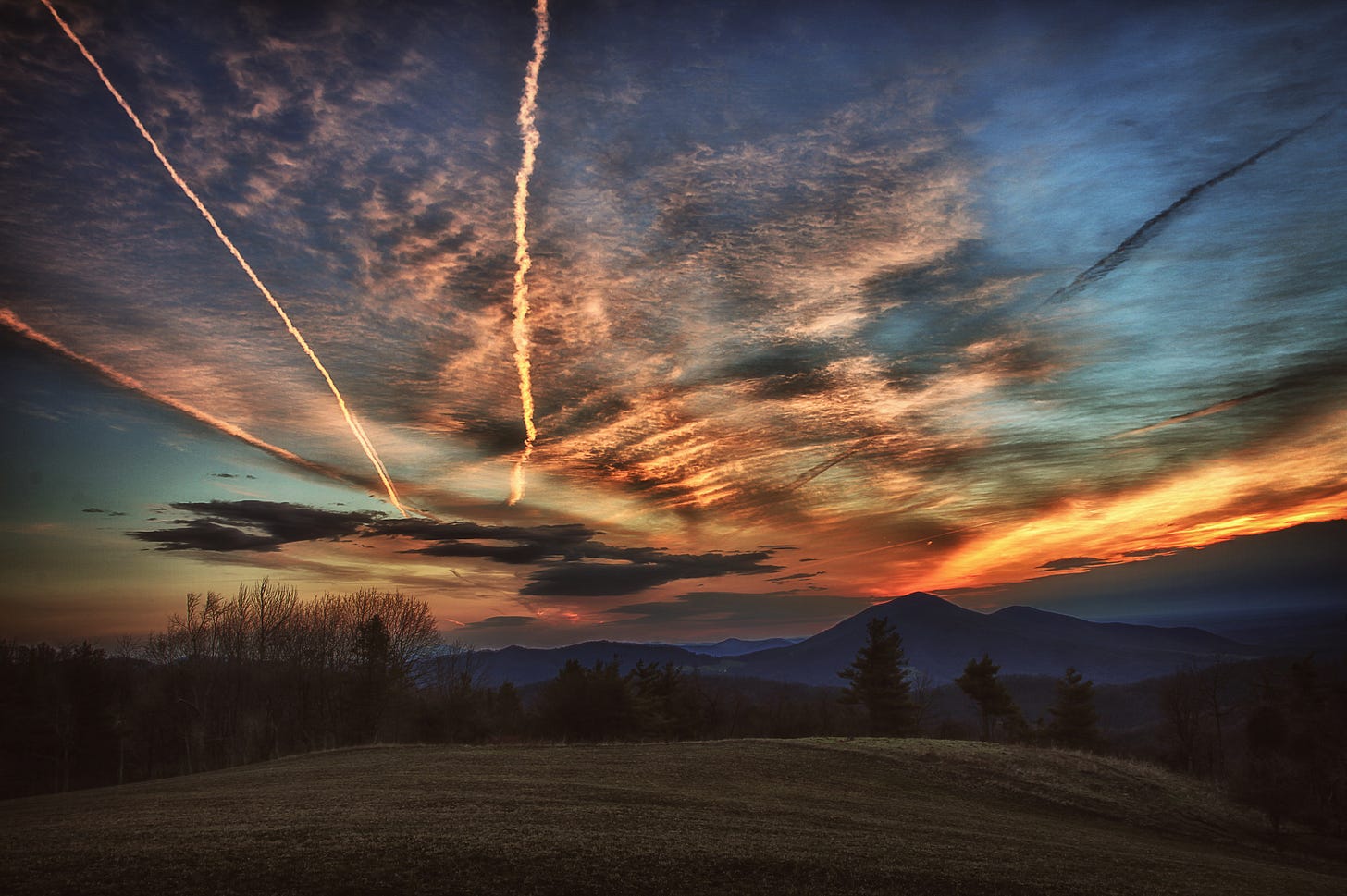Note: The views expressed here are the author’s own and do not reflect the views of Azolla Ventures or Prime Coalition.
Housekeeping
A couple of weeks ago, I joined the advisory board at Project InnerSpace, a new nonprofit that aims to make the production of clean, always-on geothermal energy possible anywhere in the world by 2030. I believe that the oil and gas industry’s technology and human capital could be one of our most valuable resources in mitigating climate change. Visionary organizations like InnerSpace are key to unlocking that potential. I wrote a little more about this on Twitter; excerpt below:
I’m excited about climate tech ecosystems outside the traditional tech hubs of San Francisco, Boston, and New York. Last week, I had the privilege of attending an event highlighting geographic diversity in venture capital more generally – Rise of the Rest’s Beyond Silicon Valley Summit – and I came away more excited about the topic than ever. In future issues, I’d like to do a few mini-dives into cities I didn’t get to in the original post. Let me know what I should cover by dropping a comment or replying to this email.
Now back to our regularly scheduled programming.
Gas leaks
A natural gas leak is like a sugar rush for climate change. Natural gas is mostly methane, which is 70-100× more planet-warming than CO₂ in the short term (20 years) and 20-40× more warming in the long term (100 years). Because of this, a lot of people are concerned about natural gas leaks.
Here’s how natural gas leaks happen:
Every year, we produce about four trillion cubic feet of natural gas. This gas comes from a few million active gas wells around the world. About 500,000 are in the US. Sometimes, these wells leak.
Sometimes, a well produces more natural gas than can be crammed into nearby pipelines. When this happens, the excess is burned (“flared”) onsite. Flaring releases carbon dioxide, smoke, and some methane into the environment. But hey, at least it’s not 100% methane. It also makes for good YouTube content.
Other times, a well produces more natural gas than the wellhead can handle and it poses an immediate threat to safety. When this happens, the excess is vented into the atmosphere. This is mostly methane.
To get natural gas into a useful form, we need to transport it to refineries. Natural gas is typically transported by pipeline, ship, or truck. Once in a while, these leak or crash, releasing methane. More routinely, pieces of gas-handling equipment like compressors aren’t 100% leakproof, so some methane escapes there as well.
After transport, we need to clean up the gas before it can be used. There’s other stuff in it, like ethane, hydrogen sulfide, and water. There are about 700 refineries in the world, and long story short, they’re not 100% leakproof. Some methane escapes here, too.
After refining, we need to transport the gas to the end user. This also happens via pipeline, ship, or truck, and more methane leaks for the same reasons as in #4.
End users also leak natural gas – stovetops, boiler rooms, leaky pipes, etc.
TL;DR: there’s a huge system of tanks and pipes containing the world’s methane. Those things leak at some rate.
Now let’s turn our attention to a different gas: hydrogen, a leading candidate to replace and decarbonize natural gas. There are several ways to produce hydrogen without emitting carbon dioxide. Some of these are projected to become cost-competitive with natural gas. That’s great news. But!
Hydrogen also turns out to be a greenhouse gas, with a global warming potential about 4-6× greater than carbon dioxide, though only about 1/10 to 1/3 as planet-warming as methane.
A big selling point for hydrogen is that we can repurpose lots of existing natural gas infrastructure, and save trillions of dollars. As we just established, this infrastructure leaks.1
Hydrogen is a smaller, more reactive, and leakier molecule than methane.
So hydrogen leaks too, and when it leaks, it causes global warming. But we in climate world don’t really talk about this, and we certainly don’t worry about it to the same extent we worry about methane. Why is that? Well, for one, there’s no carbon dioxide released when you burn it. For another, it’s less warming than methane when you leak it. And finally, my hot take is that we’re doing a bit of magical thinking – that our future hydrogen economy will be mostly leak-proof.
What would it take for hydrogen leaks to matter on a planetary scale? A group at the Environmental Defense Fund has started to study this:
We find that the climate consequences of hydrogen applications relative to their fossil fuel counterparts strongly depend on time horizon and leakage rate … For example, worst-case hydrogen leak rates could yield a near-doubling in radiative forcing relative to fossil fuel counterparts in the first five years following the technology switch, but an 80 % decrease in radiative forcing over the following 100 years after deployment. On the other hand, best-case hydrogen leak rates could yield an 80 % decrease in radiative forcing in the first five years. Simple estimates … suggest a theoretical maximum contribution of around a quarter of a degree (C) in 2050 if hydrogen replaces the entire fossil fuel energy system, and at least a tenth of a degree (C) in 2050 if hydrogen accounts for more than half of final energy demand.
In the short term, we’d probably have a similar leakage problem to our current one. In the long term, we’re probably better off, but do we really have another quarter of a degree celsius to gamble with in the meantime?
Because this is not a newsletter about doom and gloom, I’ll point out that there are early versions of potential solutions: for example, retrofitting pipeline infrastructure to handle hydrogen, or using other molecules like ammonia, formic acid, methanol, or methylcyclohexane as more transport-friendly stores of hydrogen equivalents. There are upsides and downsides to each. In any case, whether we replace natural gas or not, we’re going to have to take leaks more seriously.
Allergies
Because of course it is, climate change is projected to make US allergy seasons longer:
Lots going on in this plot, but here’s what it means:
X-axis = change in the day of the year that allergy season starts
Y-axis = change in the day of the year that allergy season ends
Colored symbols = different types of pollen-producing plants under different climate scenarios over the years 2081-2100
Above and to the left of the diagonal line = longer allergy season
Below and to the right of the diagonal line = shorter allergy season
For most plant species on this plot, both the starting day of the year (sDOY) and ending day of the year (eDOY) of allergy season are expected to move earlier with climate change. However, sDOY is expected to move earlier than eDOY, meaning longer allergy seasons.
Why is this expected to happen? The authors find three culprits:2
Higher temperature and precipitation have mixed effects that are region-dependent. For example, more rain can lead to more plant growth and therefore more pollen, but it can also physically wash pollen out of the air. On balance, they lead to annual pollen increases of 16 to 40%, but changes to daily maxima of -35% to +40%.
Higher atmospheric carbon dioxde leads to more plant growth and more pollen. The authors project annual increases in pollen of up to 250% and increases in daily maxima of up to 200%. These are large effects, but they note that A) they’re describing an ~1100 ppm world, which is far above what’s expected by 2100,3 and B) actual experiments so far have shown large uncertainty.
Land cover change – where plant species migrate over time – has an effect, but it’s small compared to the first two.
Look, do we have bigger fish to fry with respect to climate change? Sure. But allergies range from annoying to deadly, and it seems like they’re going to get worse. As a kid that had allergy-induced asthma growing up, I can tell you that that sucks. Now, for the real question you’d expect from this post: are Zyrtec pills and albuterol inhalers climate adaptation technologies?
Feels like a bit of a stretch.
We already do geoengineering
There are lots of arguments against solar geoengineering. One of the main arguments is that it’s irresponsible to attempt to make large changes to planetary systems, even in the name of something as noble and urgent as responding to climate change. The potential for unexpected negative consequences outweighs the benefits.
This is a reasonable position, given how little we know about the actual effects of solar geoengineering. Despite good intentions, however, I find it a bit misleading. Here’s my thinking:
First, it’s a hard position to disagree with at this moment, but I don’t think anyone serious is advocating for deploying solar geoengineering at this moment. It’s an argument about the state of the science right now, but we can change the state of the science! Modest R&D funding (on the order of a few $B and a few years) could narrow the range of outcomes. Last year, the US National Academies of Sciences, Engineering, and Medicine released a report advocating for $100-200MM of federal funding toward solar geoengineering.
If doing more research makes it clear that downside risks aren’t very likely or extreme, then great! Now we have another tool in the policy toolkit. If doing more research makes it clear that downside risks are quite likely and extreme, then also great! Now we can rule it out. Reality will probably lie somewhere in the murky middle, driven as much by human and social considerations as anything technical. In any case, I think we’re pretty far from a conclusion right now.
Second, and as I’ll focus on here, the argument seems to imply that solar geoengineering isn’t happening already. Against a background of no solar geoengineering, a “first, do no harm” approach makes perfect sense. But I’m not sure that’s the right background. I think we’re already doing solar geoengineering – it’s just not on purpose, and it’s mostly in the opposite of the direction we’d like.
Here are two examples, but there are many more.
Cities
Cities are made largely from asphalt and concrete, which absorb and retain more of the sun’s energy and cause the urban heat island effect:
The main cause of the urban heat island effect is from the modification of land surfaces. Waste heat generated by energy usage is a secondary contributor.
Sounds like geoengineering to me. This can work in the other direction too. You can paint buildings and roads white to cause local cooling. There’s a region in Spain with so many greenhouses reflecting sunlight that it leads to regional cooling. Stepping back, I think you could argue that any large terraforming project is also solar geoengineering, because it almost definitionally changes the way sunlight interacts with the region. I’m not expert on this, so let me know if I’ve got it wrong.
Contrails
This one was new to me:
Condensation trails, or contrails, are ice clouds that form as a result of the mixing of cold, humid air with aircraft engine exhaust plumes. They affect the radiative balance of Earth by increasing global cloudiness, interacting both with incoming solar and outgoing thermal radiation. Contrails have been shown to result in net positive radiative forcing (RF), thereby contributing to climate change. Studies find that contrails and contrail cirrus may be the largest contributor to aviation-attributable RF, potentially exceeding contributions of aviation CO₂ emissions. This means that contrails associated with today's flight activity may result in as much instantaneous warming as the entire atmospheric stock of aviation-attributable CO₂ that has accumulated since the beginning of the jet age.
Last week at the ARPA-E Summit, Program Director Peter de Bock gave a pitch on reducing contrails as a lever to combat climate change that could be roughly as effective as completely decarbonizing aviation fuel. I think some interesting technologies could come out of that idea, like dynamic routing that minimizes contrail formation by taking into account both flight plans and stratospheric conditions. But what really struck me was this map from the paper quoted above:
I look at this and can’t help but see solar geoengineering. We’re creating clouds over the US that weren’t there before. More specifically, I can’t help but see stratospheric aerosol injection:
Stratospheric Aerosol Injection (SAI) is a theoretical solar geoengineering proposal to spray large quantities of tiny reflective particles into the stratosphere, an upper layer of the Earth’s atmosphere, in order to cool the planet by reflecting sunlight back into space.
Under business as usual, we’re flying planes in the stratosphere that eject a chemical (water) that reflects some sunlight back into space. It just turns out that it’s the wrong chemical, it’s too low in the stratosphere, it’s net warming (oops!), and the planes also happen to transport people and goods from place to place.
My point is not to muddy the waters. Solar geoengineering is a drastic option that could affect billions. We don’t know enough today to do it responsibly, and we probably won’t for some time. Rather, my point is that the status quo is not static – certainly when it comes to climate change, and even when it comes to solar geoengineering. Both are happening with or without our input.
If you accidentally stumble through an open door, what do you do once you’re inside? Depends who you are and what you find. I’m pretty sure the countries most directly affected by climate change and able to mobilize against it won’t turn back and walk away.
In this light (ha ha), it feels valuable to develop an understanding of the drastic options in front of us. If climate change is a disease of the planet, then solar geoengineering isn’t like upping our dosage of Tylenol. It’s more like chemotherapy – a savior to millions that ravages its hosts’ bodies in the process.
At this point, I’ll turn to Elizabeth Kolbert in Under a White Sky:
Geoengineering may be “entirely crazy and quite disconcerting,” but if it could slow the melting of the Greenland ice sheet, or take some of “the pain and suffering away,” or help prevent no-longer-fully-natural ecosystems from collapsing, doesn’t it have to be considered?
Andy Parker is the project director for the Solar Radiation Management Governance Initiative, which works to expand the “global conversation” around geoengineering. His preferred drug analogy for the technology is chemotherapy. No one in his right mind would undergo chemotherapy were better options available. “We live in a world,” he has said, “where deliberately dimming the fucking sun might be less risky than not doing it.”
Instead of solar geoengineering, maybe we should call it “climate chemo.”
Elsewhere:
Thanks for reading!
Please share your thoughts and let me know where I mess up! You can reply directly, leave a comment, or find me below:
LinkedIn (if you’d like to connect, let me know this is how you found me)
Sure, you won’t need wellheads and refineries in the same way we do with natural gas, but the larger point holds.








